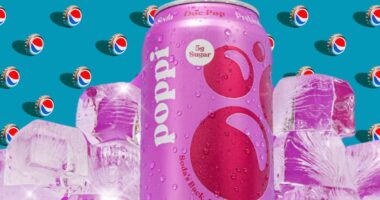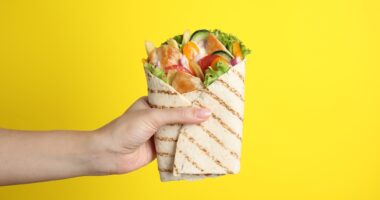The product recommendations in this post are recommendations by the writer and/or expert(s)
interviewed and do not contain affiliate links. Meaning: If you use these links to buy
something, we will not earn a commission.
When it comes to making informed choices about the food and beverages we consume, it’s important to know what to avoid as well. In a store full of juice options, not all brands are created equal, and some may be more detrimental to our health than we realize. To shed light on the less-than-ideal choices, we spoke with dietitian experts to compile a list of the juice brands that fall short with respect to nutrition and overall health.
From sugar-laden blends to misleading healthy claims, prepare to discover which juice brands to skip if you’re working toward a healthier lifestyle. Also, for more tips to help you discern which foods are actually healthy versus the imposters, be sure to check out 7 ‘Healthy’ Foods That Are Actually Worse for You Than Candy, Say Dietitians.
How healthy is fruit juice, really?
There are several common labeling strategies used to market store-bought juice products to create the perception of healthiness. Also known as “health halos,” these claims and aesthetic choices are designed to draw consumers in and incite increased consumption of these products. However, many store-bought juices still contain a significant amount of sugar per serving.
Here are a few examples of the marketing tactics frequently used with juice products that may be misleading:
- “Natural” or “all-natural”: This label suggests that the juice is made from natural ingredients and free from artificial additives. However, it does not guarantee that the juice is free from added sugars or other unhealthy ingredients.
- “No added sugars”: This label implies that the juice doesn’t have additional sugar added during processing. However, it doesn’t mean that the juice is naturally low in sugar, as it may still contain high levels of naturally occurring sugars from the fruit.
- “Organic”: This label indicates that the juice is made from organically grown fruits, which are cultivated without the use of synthetic pesticides or genetically modified organisms (GMOs). While organic is a positive attribute, it doesn’t necessarily mean the juice is low in sugar or calories.
- “Fortified”: This claim suggests that the juice has been supplemented with additional nutrients, such as vitamins or minerals. While fortification can enhance the nutritional profile, it’s important to consider the overall sugar and calorie content, as well.
- Imagery featuring fresh fruits or vegetables: Visual representations of vibrant produce on the label can give the impression that the juice is packed with nutritious ingredients. However, it’s crucial to read the nutrition facts and ingredient list to get a clear picture of the juice’s actual content.
How to shop for genuinely healthy juice brands
While it may be disappointing that not all store-bought juices are all actually as healthy as they appear or free from sugar-related pitfalls, there is a silver lining. By mastering the art of reading juice labels, you can navigate through the confusion and make informed choices.
A few key factors to look out for when shopping for genuinely healthy juice brands include finding:
- 100% fruit juice: When searching for a healthy juice, opt for 100 percent fruit juice with no added sugars or additional ingredients. The fruit juice itself should be the primary ingredient, and if added sugar is listed within the first three ingredients, it likely contains a significant amount.
- Juices with 12 grams of sugar or less: While you may know to limit, if not avoid, consuming added sugars, you’re probably wondering how much you should be mindful of the naturally occurring sugars in fruit juice. The best advice I can give as an RDN is to aim for juice with 12 grams or less of sugar.
- Juices fortified with nutrients that are low in sugar and calories: Should you decide to drink your fruit instead of eating it, opt for fortified juice brands that actually enhance the health benefits of the beverage. Selecting a juice that provides additional nutritional advantages, such as being an added source of fiber to support digestive health, can contribute to maximizing the nutritional value of your juice consumption.
Now that you know how to best identify fruit juice that is actually good for you, find out which juice brands are masquerading as healthy, nutritionally dense options that you’ll want to steer clear of, per the advice of dietitians. Here’s what RDs say are the most unhealthy ‘healthy’ juice brands in stores.
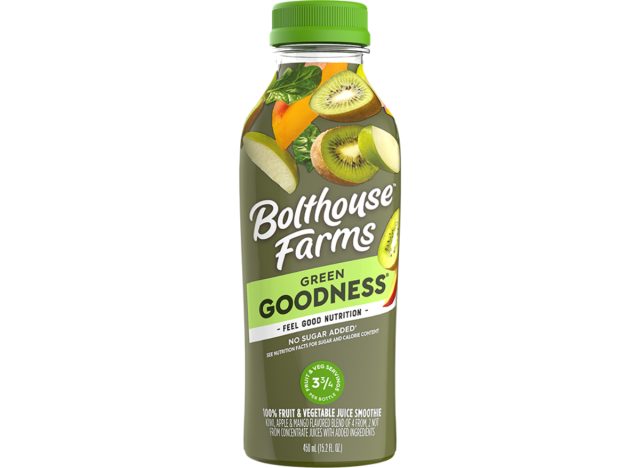

PER 8 OZ: 120 calories, 0 g fat, 25 mg sodium, 30 g carbs (1 g fiber, 26 g sugar), 1 g protein
“While Bolthouse Farms’ Green Goddess may seem like a nutritious choice with its blend of spinach, kale, and spirulina, a closer look at its nutritional profile reveals a significant problem,” explains shares Jessie Hulsey, RD, an Atlanta-based dietitian.”With a staggering 46 grams of total sugar, only 3 grams of fiber, and a mere 2 grams of protein per serving, this smoothie falls short of providing the balanced nutrition that individuals need. Excessive sugar intake, coupled with insufficient fiber and protein, can lead to blood sugar spikes, poor digestion, and a lack of satiety.”
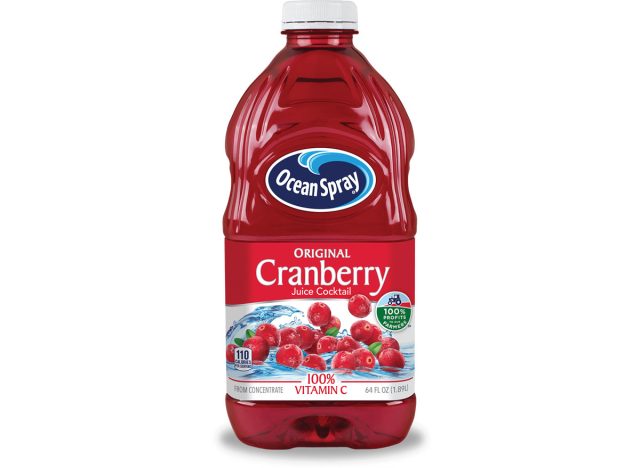

PER 8 OZ: 110 calories, 0 g fat, 5 mg sodium, 28 g carbs (0 g fiber, 25 g sugar), 0 g protein
Sarah Pflugradt, MS, RDN, CSCS, of Fueling Active Kids advises against Cranberry Juice Cocktails. “Cranberry juice cocktail sounds like a sip of healthy antioxidants, but go for the 100% juice if cranberry is your juice of choice. The ‘cocktail’ typically means it is loaded with added sugar,” says Pflugradt.
For children under the age of two, juice is no longer recommended due to its high sugar and calorie content without many other nutrients. Ocean Spray’s Cranberry Juice Cocktail is one example of how much-added sugar can be packed into cranberry juice. With 25 grams of sugar in 8 ounces, you’ll meet the daily added sugar recommendation in just one serving!
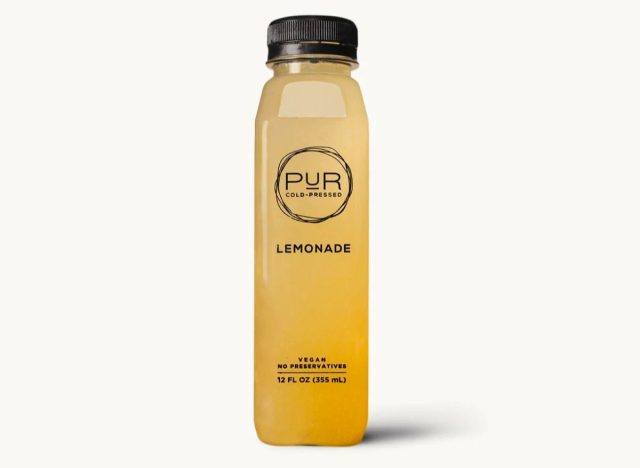

PER 16 OZ: 120 calories, 0 g fat, 0 mg sodium, 32 g carbs (1 g fiber, 24 g sugar), 1 g protein
“The PUR Cold Pressed Turmeric Lemonade juice may sound like a healthy choice containing anti-inflammatory turmeric, but with 22 grams of added sugar in a 16-ounce serving, that is far from something that will reduce inflammation. Consuming too much added sugar can raise blood pressure, blood sugar, and triglycerides (a common fat in the blood), which are all markers of inflammation,” says Sheri Berger, RDN, CDCES.
PUR carries a line of shot-sized juices that might be a better way to get your fix. Packed with antioxidants and add nutrients, you can get your nutrition in a condensed serving size without the added sugars.
READ RELATED: I Tried Wingstop for the First Time Ever & Understand Why Chefs Rave About It
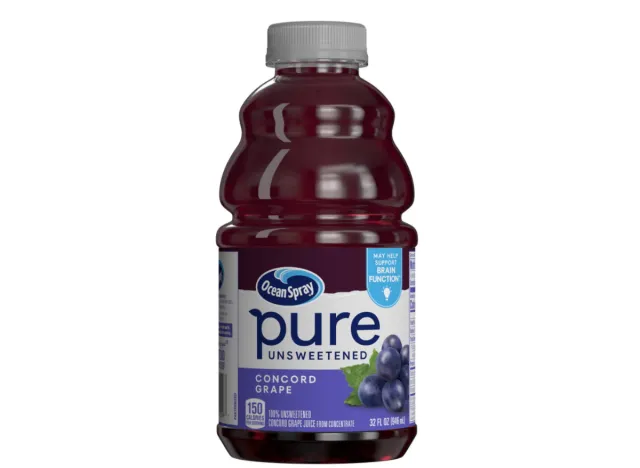

PER 8 FL OZ: 160 calories, 0 g fat, 5 mg sodium, 39 g carbs (0 g fiber, 9 g sugar), 0 g protein
“The Ocean Spray Pure Unsweetened Concord grape juice leads you to believe they reformulated their popular grape juice to make it more nutritious for you,” explains Brittany Delaurentis, RD. “However, with this rebrand, one cup of juice still is providing 37 grams of sugar and 39 grams of carbohydrates. Your best will always be snacking on some fresh grapes instead.”
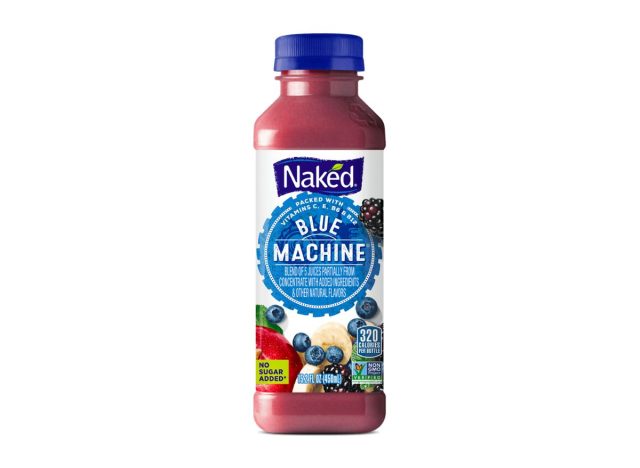

PER 15.2 FL OZ BOTTLE OF BLUE MACHINE: 320 calories, 0 g fat, 20 mg sodium, 76 g carbs (3 g fiber, 55 g sugar), 2 g protein
When it comes to ‘healthy’ fruit juices that are in actuality not that great for your health, Patricia Kolesa, MS, RDN, tells us that “the first juice that comes to mind for me is Naked Juice.”
“While many of them contain fruits and vegetables, some of them [such as the Blue Machine flavor] contain 50 grams of sugar or more,” says Kolesa. “This is more than you might get from a can of soda! Too much added sugar from beverages in the diet can contribute to blood sugar spikes and ‘sugar crashes’ or low energy levels.”
For a healthier alternative, Kolesa advises the following: “My recommendations would be to make your own juice—or smoothie—at home or eat whole fruits as often as possible!”
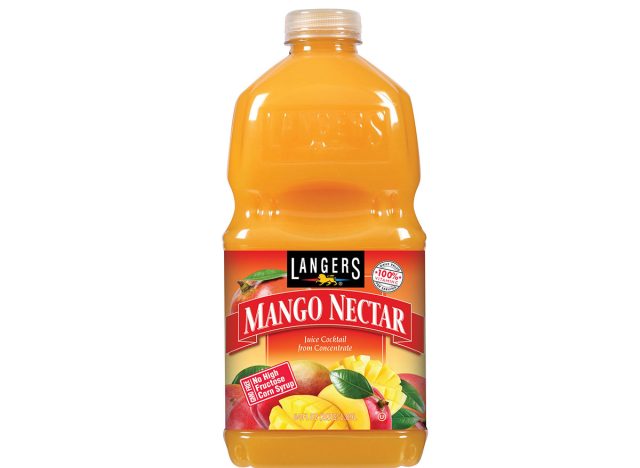

PER 8 FL OZ: 140 calories, 0 g fat, 15 mg sodium, 35 g carbs (0 g fiber, 35 g sugar), 0 g protein
In addition to avoiding the health halo claims noted above, you’ll also want to take a second look at any juice labeled as “GMO-free” or claiming to have “no high fructose corn syrup,” as these claims can also create a false sense of healthiness for certain juice products. Oftentimes, juice “cocktails” can still be pumped with added sugars.
This appears to be the case with Langers Mango Nectar juice, which despite its claim not to contain any high fructose corn syrup, still contains 40 grams of sugar, including 28 grams of added sugars per serving 10-ounce serving. That’s a whopping 15% of your recommended daily limit for sugar for a tiny drink! Langers’ ingredients are also primarily composed of filtered water and has minimal amounts of mango puree, citric acid, natural flavor.
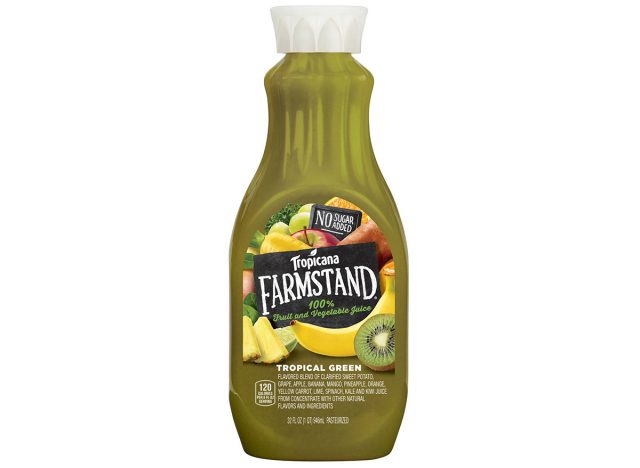

PER 8 FL OZ: 120 calories, 0 g fat, 55 mg sodium, 27 g carbs (0 g fiber, 26 g sugar), 1 g protein
Green might look like the color of health, but in this case, that facade might lead you astray. Lacking in fiber and abundant in sugar, Tropicana’s Farmstand beverage fails to surpass the nutritional value of your typical juice. Despite the claim of providing two “servings of fruit and vegetables in every glass,” it still doesn’t contain any fiber that vegetables offer.




